KENSINGTON GARDENS and HYDE PARk

This chapter Deals with the 2 royal parks and with the districts around them: KENSINGTON, NOTTING HILL, BAYSWATER, KNIGHTSBRIDGE AND BELGRAVIA. IT GIVES SPACIAL ATTENTION TO PLACES LINKED WITH PRINCESS DIANA
THE CENTRAL LOndon most famous RoyaL PARKS

LBTC route within KENSINGTON GARDENS and HYDE PARK

Use this map to find out more about the area’s attractions
Pointed on it, the ALBERT MEMORIAL
Remember that you can CYCLE or WALK an amazing 4 miles of continuous green along 4 ROYAL PARKS (including GREEN and ST.JAMES’S).

all the royal parks in greater london. Royal?
The Royal Parks are owned by the Monarch in right of the Crown; however, under the Crown Lands Act 1851, statutory responsibility for the management and upkeep rests with the government. From 1993 until 2017, The Royal Parks Agency managed the parks on behalf of the Secretary of State.
In 2017, The Royal Parks Charity was created to manage the parks under a contract with the government. Appointments to the charity’s Board are made by the Secretary of State for Culture, Media and Sport, as well as the Mayor of London.
What to do in KENSINGTON GARDENS and HYDE PARK accOrding the Londonist: https://londonist.com/london/things-to-do/things-to-do-in-hyde-park
Not oNly ROYAL PARKS…LondOn is green
London became the world’s first National Park City in July 2019, so that Londoners and urban nature could be better connected.
The National Park City Foundation is an independent charity entirely funded by grants and individual donations from Londoners.
what about the “Non-royals”?… do not miss them either, when in london!
Battersea PARK
On this tour!

East:Victoria park
Central london royal parks: through the PRINCESS DIANA’s life
Common features in the royal parks
Drinking fountains
SAMUEL GURNEY MP fouded the Metropolitan Free Drinking Fountain Association (as it was then called) in 1859. Prince Albert wrote conveying his deep interest in the objects of the Association.
New Coffee kiosks
Designed by the London-based firm Mizzi Studio in collaboration with the cafe brand and operator Colicci, the Horseshoe Bend kiosk in the shadow of Buckingham Palace at St. James Pais the final installation in a commissioned project that started with the design of the Serpentine Coffee House and a family of nine kiosks in Hyde Park, Green Park and St. James Park.
By the way, notwithstanding the name you are in the CITY OF WESTMINSTER. The RBKC is to the West of the BROAD WALK of KG.
Kensington Gardens began life as one of King Henry VIII’s many hunting parks. The land was actually part of Hyde Park until, in 1689 King William III and his wife Queen Mary (JOINT QUEEN) decided to build a new home – KENSINGTON PALACE – next to the park. To create a private garden for their new Palace, they carved off part of Hyde Park to create Kensington Gardens.
Queen Mary had a discerning eye for garden design and commissioned a palace garden of formal flower beds and box hedges in the Dutch style.
After MARY, was CAROLINE, another QUEEN (but consort, she was the wife of George II) who in 1728 took the landscape of Kensington Gardens one stage further. The landscape that we enjoy today is largely down to her, and her innovative garden designer, Charles BRIDGEMAN. Together, they created the winding SERPENTINE– one of the first artificial lakes in the country designed to appear natural, rather than formal.
QUEEN’S GATE. The actual gate & the LODGE


Queen's Gate is the formal entrance to Kensington Gardens at the northern end of the road called Queen's Gate. It must be one of the most imposing entrances to any public park.
Made of iron. A display of the Royal Coat of Arms.
The number of points of access into Kensington Gardens have increased since they were first laid out in the eighteenth century, in line with increasing public use. Today, there are a total of 22 gateways into the park, 2 gated openings under Serpentine Bridge, plus more recent supplementary turnstile gates to facilitate exit from the park after closing. Six of the gates are of a more grand, ornamental design and create distinctive entrances into the Gardens, the largest being Coalbrookdale Gate (1852) and Queen’s Gate (1858) and the oldest, although the least decorative, being Lancaster Gate (1851). The majority of the remaining gates were created in the mid nineteenth century, with many of the original gates being removed in World War II, and subsequently replaced with simple iron gates to match the surrounding railings.
THE ALBERT MEMORIAL, the Modest Prince (See next chapter)


NEOCLASSICAL + NEOGOTHIC
A Victorian excess (not for the Victorians) housing FOLEY’s statue of PRINCE ALBERT, was designed by SIR GEORGE GILBERT SCOTT. Replete with marbles, mosaics of semiprecious stones, statues of allegorical and of great figures… it was b. 1868-73. The builders: the LUCAS firm also built ST.PANCRAS. Workers dined here (beef and plum pudding) while listening temperance speeches by the Lucases.
Four continents are represented by a statuary group at the base. For Europe, BRITANNIA rides a bull, surrounded by crowned women.
Admire the frieze of the Great Figures.
Above everything else, a 15 ft. seating ALBERT, grasping a catalog of the GE1851. He was cousin and espouse of QV, and died from typhoid in 1861.
COALBROOKEDALE GATE, West Carriage Drive




Originally, part of the GE 1851 intricately decorated with metalwork stags and other ornaments.
They made in Coalbrookdale, Shropshire, and now divide Hyde Park from Kensington Gardens
what happened to the iron railings during in world war II…IS IT A SECRET?

During the summer of 1941, during World War II, the United States stopped exporting scrap metal to the UK. The government declared, in response, that all unnecessary metal, including railings and gates, was to be removed, melted down and utilised for the war effort. Many sets of iron railings in Britain were removed. Railings were usually cut off at the base; the stubs may still be seen outside many buildings in London and elsewhere where they have never been replaced. This was supposedly to provide scrap metal for munitions, but there is some scepticism as to whether they were actually used for this purpose.
More about what happened to the RAILINGS of Britain during WW2. A story of fake recycling?
What about a successful Recycling?: what used to be war casualty stretchers are now… FENCES!
Stretcher fences’ are found dotted around London, but their history is unknown to many. Some still have the body shapes in them made by the injured people they were used to carry…

Now that you are leAving behind KENSINGTON GARDENS, As THEY are full of artWORKS and archItecturAL features And attractions… perhaps you wish to COME BACK to know more!. AND, WHAT ABOUT KENSINGTON?. Here you have some ideas
Nearby, to the west
The Broad walk, A secret runway?

What many people involved in these discussions about building new airports for London or enlarging existing ones don’t realise is that there may already be an extra runway in London ready for use… and it’s right in the city centre… and you can come and see it straight away!
ROUND POND

Despite its name, it is not circular, but rectangular with stepped and rounded corners. With a long history of popularity with model yacht enthusiasts, it is the home of the Model Yacht Sailing Association (established 1876) and the London Model Yacht Club (established 1884).
Queen victoria’s statue
Victoria was born and grew up at Kensington Palace. Here, aged 18, she was awakened and told that she was now queen. The sculptor, her daughter Louise, shows Victoria in her coronation robes.
The statue was a gift from the Kensington Golden Jubilee Memorial Executive Committee.
Louise was born at Buckingham Palace, sixth child of Queen Victoria. Was a talented sculptress taught, and possibly more, by Joseph Boehm. In 1871 caused a stir by marrying John Douglas Sutherland Campbell, Marquis of Lorne and heir to the dukedom of Argyll, but not actually royalty. He was appointed Governor General of Canada in 1878 and she moved with him to Ottawa as his vice-regal consort. She was the most artistic of Victoria's children, being an able actress, pianist and dancer and a prolific sculptress. She died at Kensington Palace.
Kensington PALACE

Originally a 1605 Jacobean mansion named Nottingham House, it was purchased by King William III and Queen Mary II in 1689 to escape the damp and crowded Whitehall Palace. They commissioned architect Sir Christopher Wren to add new state apartments and pavilions. At the beginning of the 18th Century, Queen Anne made improvements to the gardens and had the Orangery built.
King George II and his wife, Queen Caroline, were influential, with Caroline shaping the gardens into a style that is still largely visible today and creating the Serpentine Lake. George II was the last monarch to live at the palace, with his son George III moving to Buckingham House.
The palace became a home for "minor royals," such as Queen Victoria and her daughter, Princess Louise.
Queen Victoria was born in the palace in 1819 and spent her childhood there, though she considered it a "gilded cage". She held her first council meeting there upon becoming queen.
The palace was used by charitable organizations during World War I and suffered bomb damage in World War II. Princess Margaret and Diana, Princess of Wales, lived there, and it is the official London residence of the Prince and Princess of Wales.
REVOLUTION IN ENGLAND: WILLIAM III and MARY II, THE GLORIOUS REVOLUTION
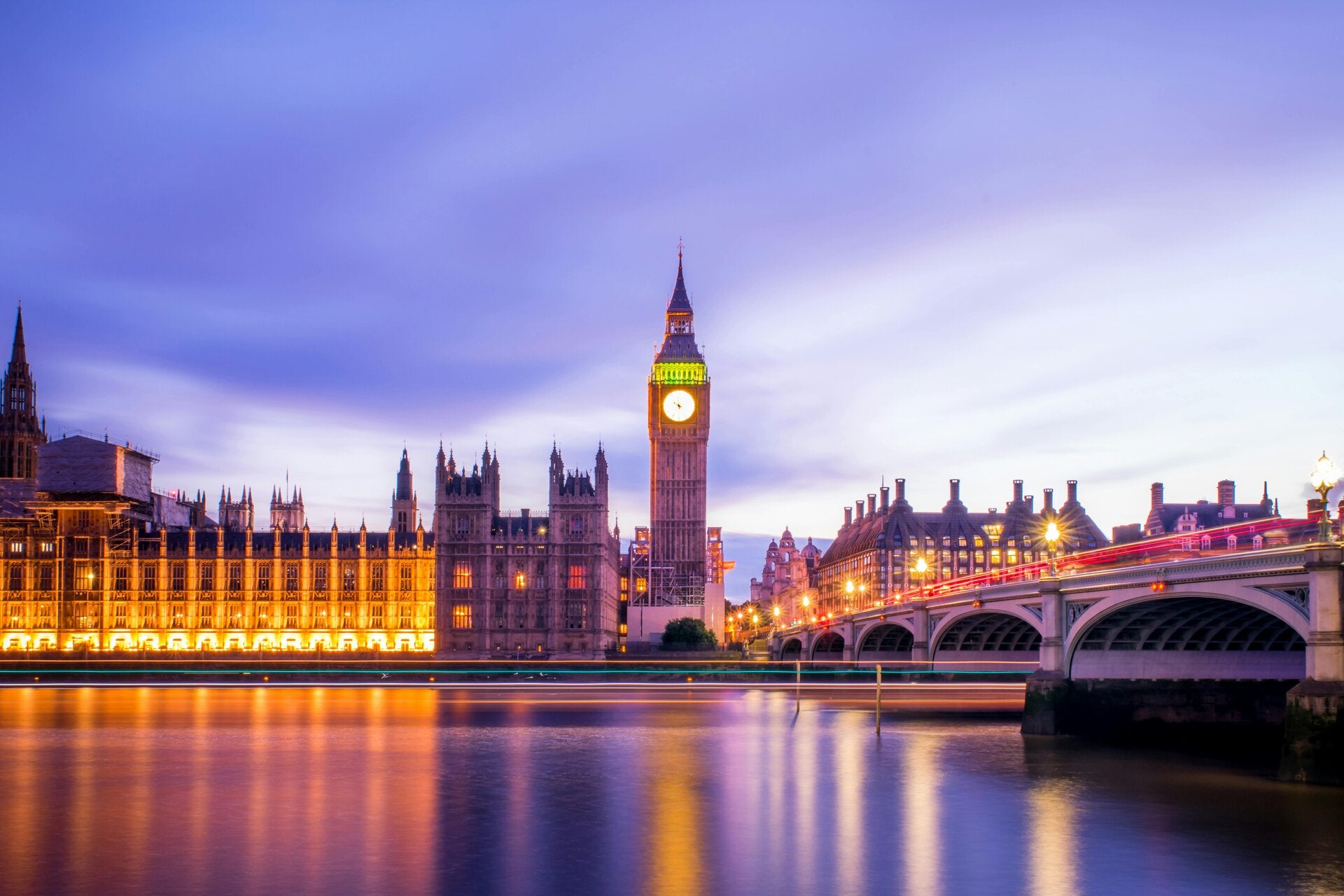
The Glorious Revolution was a pivotal event in British history in 1688–89 when King James II was deposed and replaced by his daughter, Mary II, and her husband, William of Orange. It was a largely bloodless revolution that established Parliament's supremacy over the monarchy, transitioning England from an absolute monarchy to a constitutional one. Key outcomes included the signing of the Bill of Rights in 1689, which limited the powers of the crown and guaranteed rights for Parliament.
James II, a Catholic, favored Catholics and issued policies that alienated the Protestant majority in Parliament and the country. The birth of a son to James II in 1688, who would be raised Catholic, threatened to establish a Catholic dynasty,
A leading a group of prominent Protestant peers to invite William of Orange to intervene. William of Orange landed in England with a Dutch army in November 1688.. James II’s army deserted him, and after a failed attempt to flee, he was ultimately exiled to France in December 1688.
A convention elected by Parliament declared the throne vacant and offered it to Mary and William as joint rulers.
The new monarchs agreed to a Bill of Rights that limited the monarch's power and established rights such as the freedom of speech in Parliament, regular parliamentary sessions, and prohibiting a Catholic from claiming the throne.
Long-term impact: The events of the Glorious Revolution influenced the American colonies, where colonists were inspired by the principles of limited government and self-rule, contributing to their eventual independence
Significance for American colonies: No taxation without…
From the earliest settlements, distance and a degree of self-government (such as Virginia's House of Burgesses in 1619) fostered a sense of autonomy.
A long period of "salutary neglect" by Britain (roughly 1689–1763) allowed the colonies to develop their own cultural and political norms, further growing their self-reliance and distinctiveness from the mother country.
The French and Indian War (1754-1763) was a turning point, as it was a continental operation that required cooperation among colonial soldiers and militia, giving them a shared experience.
The imposition of new laws and taxes by the British Parliament in the 1760s and early 1770s, such as the Stamp Act and Intolerable Acts, caused widespread discontent and a pan-colonial identity began to coalesce in opposition to these common grievances.
Initially, the colonists were protesting for their rights as British subjects, not seeking independence. The slogan "No taxation without representation" stemmed from their expectation of having the same rights as people living in Britain.
Diana & charles
Prince Charles and Princess Diana lived in Apartments 8 and 9 at Kensington Palace. These were located within the quadrangle that sits between the Clock Court and Ivy Cottage, at the north end of the grounds.
The two apartments were combined to create a single, substantial residence for the newly married couple in 1981, where they went on to raise their sons, Prince William and Prince Harry. The apartments had previously been built by King George I for his mistress, the Duchess of Kendal.
Diana remained in the apartments after her separation and divorce from Charles, living there until her death in 1997.
Today, Apartments 8 and 9 are used as office spaces for the Prince and Princess of Wales and their staff.
Why Didn’t Charles Marry Camilla in the First Place?: https://www.rd.com/article/why-charles-didnt-marry-camilla-first/

The sunken garden
The Sunken Garden was created in 1908 at the instigation of King Edward VII, in an area of the gardens previously occupied by potting sheds and greenhouses. This new layout was modelled on the Pond Garden at Hampton Court Palace and celebrated a formal Edwardian style of gardening incorporating natural materials, herbaceous planting on terraces and water features. Over time the planting and other soft landscape features has gradually evolved and changed.
The Sunken Garden was extensively redesigned for the memorial, with over 4,000 individual flowers planted, including many of Diana's favourite forget-me-nots, along with various roses, tulips, and lavender, to create a tranquil setting.
While the general public cannot enter the Sunken Garden itself, visitors can view the statue from the surrounding "Cradle Walk" (also known as the "Nanny Walk") which encircles the garden.
DIANA’S MEMORIAL STATUE
Commissioned by Diana's two sons William and Harry on the 20th anniversary of her death, the statue was designed and executed by sculptor Ian Rank-Broadley and placed in the newly redesigned garden by Pip Morrison before being unveiled as a memorial to Diana on 1 July 2021, which would have been on her 60th birthday. During her time at Kensington Palace Diana, Princess of Wales was particularly fond of the sunken gar
The orangery
Queen Anne (who reigned 1702–1714) commissioned the building, seeing it as a vital addition to her beloved gardens at Kensington Palace, her principal royal residence.
Architects: The design is primarily attributed to the visionary architect Nicholas Hawksmoor, a leading figure of the English Baroque style, with modifications and enhancements made by Sir John Vanbrugh.
The name "Orangery" stems from its initial function as a greenhouse for delicate orange and other citrus trees, protecting them from the harsh London winters. It was fitted with under-floor heating to maintain a suitable climate.
But the building was far more than a simple greenhouse; its grand scale and elegant interior, including intricate carvings by the esteemed sculptor Grinling Gibbons and 24 white Corinthian columns, made it a fashionable setting for lavish royal parties, balls, and even state ceremonies. Queen Anne also used it for the traditional Maundy Thursday ceremony.

In case you go back to museumland…
Gloucester rd.
Da mario, diana and her sons favorite pizzeria

One more of diana’s links with the area
Diana, PRINCESS OF WALES memorial playground

The broadwalk Café

Black lion gate (for bayswater road and queensway)

why not a walk or ride to the TOWN CENTRE AND former villaGe?
millionaires row

Kensington church st.
THE CHURCHILL ARMS P.H.

Holland street

High street ken

Kensington square

Holland park and around

And, As well…
Why not exploring bayswater and notting hill?. You are going to enjoy quiet streets (or the busy ones), a BEAUTIFUL architecture, and lots of shops and eateries!


Shops & eateries
Bayswater road
Queensway

Westbourne grove

Through bayswater: Back to central london: Walk/cycle to edgware road
The victoria ph

Connaught square & village:shops &Eateries

EDGWARE ROAD: Middle-eastern SHOPS&eateries


A little bit extra?: Walk on /cycle on to Little venice
The pool

The prince alfred ph

The warrington ph


Or ON…to portobello road and further on
Electric cinema
And the market. And the cafés, pubs and restaurants
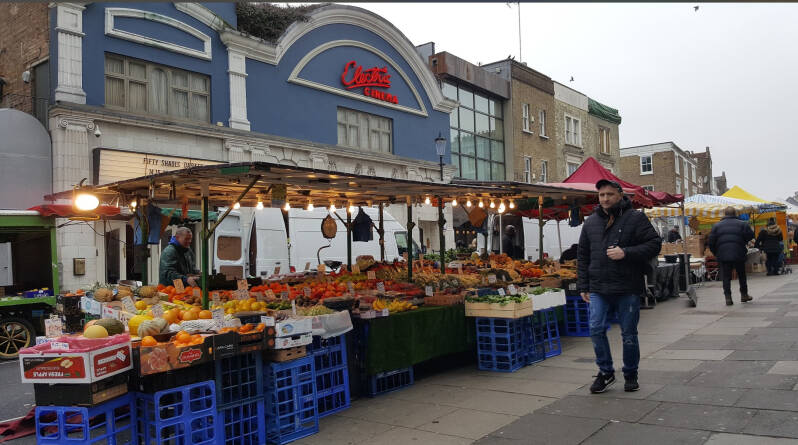

Lisboa patisserie
GOLBORNE RD. has a good choice of eateries

A princess diana connection… The museum of brands is the former lighthouse
Museum of brands

London Lighthouse was a centre for people with HIV/AIDS. It was the world's largest centre for people living with HIV when it opened, and helped pioneer a patient-centred approach in HIV care, and housed a residential unit, as well as day-care and drop-in centre facilities.
The official opening of London Lighthouse took place in November 1988 with a plaque unveiling by the late Princess MargaretIt was also frequently visited by Diana, Princess of Wales. Diana, Princess of Wales, was a significant supporter of the London Lighthouse, a center for people affected by HIV and AIDS located in Notting Hill, and supported the center in several ways. She made public and private visits to the center, met with residents and staff, and launched a fundraising appeal in 1996. Her work at the Lighthouse and other locations helped to break down the stigma associated with HIV/AIDS.

And now, is Back to our tour, after coalbrookedale gate
The SERPENTINE south Art Gallery
Serpentine South, previously known as the Serpentine Gallery, was established in 1970 and is housed in a Grade II listed former tea pavilion built in 1933–34 by the architect James Grey West.[3] Notable artists whose works have been exhibited.
On the ground at the gallery's entrance is a permanent work made by Ian Hamilton Finlay in collaboration with Peter Coates, and dedicated to Diana, Princess of Wales, the gallery's former patron.

To the north of the gallery, and the west side of the serpentine, for you to explore kensington gardens
Ancient gnarled SWEET CHESTNUT trees
Survivors of the 1730s plantings by CHARLES BRIDGEMAN
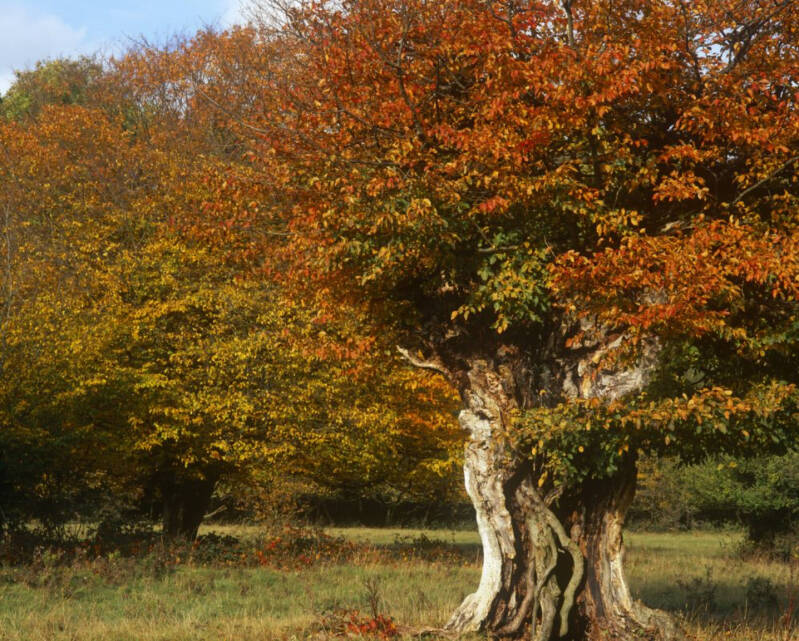
QUEEN CAROLINE’S TEMPLE

WILLIAM KENT (who worked here after BRIDGEMAN) had a picture approach to landscaping, designing buildings and settings. This. “temple” was used as a Keeper’s Lodge
John Hanning Speke (1827-1864) was the Victorian explorer who discovered the source of the Nile.
Physical energy statue

A copy of the RHODES MEMORIAL in CAPE TOWN. A rough-hewn muscleman struggling with his horse, by sculptor GF WATTS
Peter pan statue
Kensington Gardens is one of London’s loveliest parks for children. In the early 1900s, local resident J. M. Barrie was inspired to write Peter Pan after many happy visits to the park. In 1912, he paid for a bronze statue of his famous hero to be placed in the park. Since then, generations of children have visited Kensington Gardens to meet the beloved ‘boy who couldn’t grow up’. Not far from here is the curious Elfin Oak – an ancient, gnarled tree stump that has been carved with the figures of fairies and small animals. The Elfin Oak was designed by Ivor Innes in 1930. In 1929, with the popularity of both the play and the novel firmly established, Barrie unexpectedly and generously gifted his copyright of Peter Pan to GOSH.
The Peter Pan statue was erected in secret during the night and 'magically' appeared in the morning of 1st May 1912. In THE TIMES newspaper Barrie placed this announcement: "There is a surprise in store for the children who go to Kensington Gardens to feed the ducks in the Serpentine this morning.
THE ITALIAN GARDENs
The layout of the Italian Gardens can be traced to Osborne House on The Isle of Wight, where the royal family spent its holidays.
Prince Albert was a keen gardener and took charge of the gardens at Osborne House, where he introduced an Italian garden with large raised terraces, fountains, urns and geometric flower beds.
In 1860 he brought the idea to Kensington Gardens. The design by James Pennethorne includes many features of the Osborne garden.

Queen annE’S alcove
HAWKSMOOR’s or WREN’s?

The TWO BEARS DRINKING FOUNTAIN

Café

The serpentine bridge
Separating the LONG WATER and the SERPENTINE, and forming a border between KG with HP
The long and narrow western half of the lake is known as THE LONG WATER. You are in HYDE PARK.
The Serpentine takes its name from its snakelike, curving shape, although it only has one bend. It is part of KENSINGTON GARDENS
The serpentine & THE LONG WATER are, in fact… a river
The lake is the largest feature. We own it, as a good part of the park, to the initiative QUEEN CAROLINE, consort of GII, In 1730 the WESTBOURNE STREAM was dammed, in order to give a good spot for the royal yachts to mess about on. The WESTBOURNE arises from streams to the west of HAMPSTEAD HEATH, joins up in the Kilburn area with another tributary (from FROGNAL) called the KILBOURNE and flows through Hyde Park, Sloane Square and into the Thames near <<<<Chelsea Bridge.
Indeed, that was originally that the lake was fed by the River Westbourne entering at the Italian Garden at the north-western end of the Long Water,,but the Westbourne ceased to provide the water for the Serpentine in 1834, as it had become polluted so water was for some years pumped from the tidal Thames. Finally, the water is now supplied by three boreholes drilled into the Upper Chalk. The first borehole is at the Italian Gardens, the second at the Diana Memorial and the third, drilled in 2012 to a depth of 132 m (433 ft), is within 50 m (160 ft) of there
The DAMMED river westbourne!
The Long Water runs south-east from this point to Serpentine Bridge, where the lake curves to the east, following the natural contours of the land. At the eastern end, water flows out via a sluice in the dam, forming a small ornamental waterfall at the Dell where a small garden exists landscaped in the 1870s by Lord Redesdale.[3] The outflow has not historically maintained the waterfall, and re-circulation pumps were installed in the Dell, below the dam, to sustain this feature. The restoration work in 2012 restored the flows into the Serpentine and this waterfall is now restored as originally designed.

naval Battles
During June of 1814, Britain threw a grand party in London to celebrate the end of nearly twenty years of war against France. It brought together a host of royals and dignitaries from the Allied victors—including Tsar Alexander I, King Frederick William III of Prussia. Prince Metternich and Field Marshal Blücher—for a spectacular fortnight of sumptuous parties, gala outdoor entertainments, horses races at Royal Ascot and a sojourn to Oxford for a banquet and a special awards ceremony, all to celebrate the defeat of Napoleon and his exile to the isle of Elba.
Historical re-enactment is a centuries-old form of fun. The Romans recreated famous battles in their amphitheaters for public entertainment, and from around the 17th century military displays, mock battles and re-enactments became popular in England. Prints from the King's Topographical Collection show, historical re-enactment was used to celebrate the Grand Jubilee on 1 August 1814, in mock naval battles which took place on Hyde Park's Serpentine River.
HARRIET WESTBROOK, the pregnant wife of SHELLEY, the poet, drowned herself here after her husband had eloped with the 16 years old MARY WOLLSTONECRAFT.
Christmas peter pan cup
Members of the Serpentine Swimming Club have been plunging themselves into the freezing lake every Christmas Day since 1864, making it the oldest continuously swam race in the world.
The author of Peter Pan, JM Barrie, started watching in 1903 and presented the cup all the way up to 1932
Now, hyde park
The MANOR OF EIA belonged to the Crown, after the DISSOLUTION of WESTMINSTER ABBEY, who had owned the area in SAXON times. A Royal CHASE, stocked with deer, but, as well, used for military manoeuvres and encampments.
in 1637, opened as a public space (milk available from a red cow!). Crowds came to see horse-racing and other sports, but the COMMONWEALTH sold it out , only for the new owner to charge for admission (to the indignation of PEPYS). With the RESTORATION, the sale was cancelled, and the access became restricted to the “beau monde”. A high wall was erected, replaced by railings in 1825. That beau monde used to ride round THE TOUR -later called THE RING- a circular drive, pausing for gossip and to admire each other’s equipage. Fashionable carriages could be seen along ROTTEN ROW…
The activities taking place in the park were very diverse, in the 18th and 19th cs:In 1768 took place the last formal royal hunt. A little later, pits were dug along the E and N borders to supply clay for bricks, to build the new houses of MAYFAIR and MARYLEBONE. Gunpowder magazines and arms depots were sited in more isolated places. A large reservoir was sited in the Eastern boundary. and an ideal spot for FOOTPADS to rob all those crossing the park (as HORACE WALPOLEJohn Rocque's Map of London, 1746, marks a point inside the park, close to the Tyburn gallows, as "where soldiers are shot." in 1749).
A wonderful open space, a leisure ground, in the middle of built-up areas, large enough for allowing you to lose sight of the city. “The lungs of London”, according to PITT THE ELDER, almost 300 years ago.
Look in the map for all features including up to 20 monuments or artworks
not always an enjoyable place
Executions
John Rocque's Map of London, 1746, marks a point inside the park, close to the Tyburn gallows, as "where soldiers are shot." Against the wall in the NE corner, soldiers were EXECUTED as well
Robberies
And an ideal spot for FOOTPADS to rob all those crossing the park (as HORACE WALPOLE complained)

TERROR ATTACK
At 10:43 am, a nail bomb exploded in the boot of a blue Morris Marina parked on South Carriage Drive in Hyde Park. The bomb comprised 25 lb (11 kg) of gelignite and 30 lb (14 kg) of nails. It exploded as soldiers of the Household Cavalry, Queen Elizabeth II's official bodyguard regiment, were passing. They were taking part in their daily Changing of the Guard procession from their barracks in Knightsbridge to Horse Guards Parade. Three soldiers of the Blues and Royals were killed immediately, and another, their standard-bearer, died from his wounds three days later. The other soldiers in the procession were badly wounded, and a number of civilians were injured. Seven of the regiment's horses were also killed or had to be euthanised because of their injuries. Explosives experts believed that the Hyde Park bomb was remotely triggered by an IRA member inside the park.

For you to explore….
On the other side of the bridge, north west of the serpentine… HANG ON, THIS IS KENSINNGTON GARDENS!
The magazine sackler SERPENTINE GALLERY NORTH
In 2013, Serpentine North was opened to the public named as the Serpentine Sackler Gallery, a name changed to Serpentine North in 2021.[5] This gave new life to The Magazine, a Grade II* listedformer gunpowder store built in 1805,[6] with the addition of an extension designed by Zaha Hadid Architects. Located five minutes' walk from Serpentine South across the Serpentine Bridge, it comprises 900 square metres (9,700 sq ft) of gallery space, restaurant, shop and social space. The Magazine Restaurant adjoins the gallery space.



To the n/nw of the serpentine north gallery
Allotments

Henry moore’s arch

To the east of the gallery

A cockpit?
Fans flocked to Hyde Park's Cockpit for a free concert given by the Rolling Stones on 5th July 1969
Lutyens drinking fountain
A few examples of a special all-metal drinking-fountain, designed by in 1950 by Messrs Lutyens & Greenwood, can be found in the Royal Parks and elsewhere in London. As the architect of New Delhi and Hampstead Garden Suburb, Edwin Lutyens, died in 1944, I imagine that the Lutyens who designed this “ugly object” might well have been his son Robert Lutyens (1901-1972), who published a book with his co-author Harold Greenwood in 1948.

This stone was erected by the Royal Norwegian Navy and the Norwegian Merchant Fleet in the year 1978. We thank the British people for friendship and hospitality during the Second World War. You gave us a safe haven in our common struggle for freedom and peace.


Serpentine Lodge. Hq. Of THE ROYAL HUMANE SOCIETY
The Society was founded in London in 1774 by two doctors, William Hawes (1736-1808) and Thomas Cogan (1736-1818).
They were concerned at the number of people wrongly taken for dead – and in some cases, buried alive. Both men wanted to promote the new, but controversial, medical technique of resuscitation and offered money to anyone rescuing someone from the brink of death.

HYDE PARK, inspiration for CHARLES TRENET
Ranger’s LODGE
An elegant brick-built two storey house with a triple bay on each side of the centrally located front door. This is the Ranger’s Lodge, which was built in 1831/2. It houses the park’s administrative offices. Attractive because of its age and lovely setting, it is not distinguished architecturally. It stands next to a newer and far more elegant building,
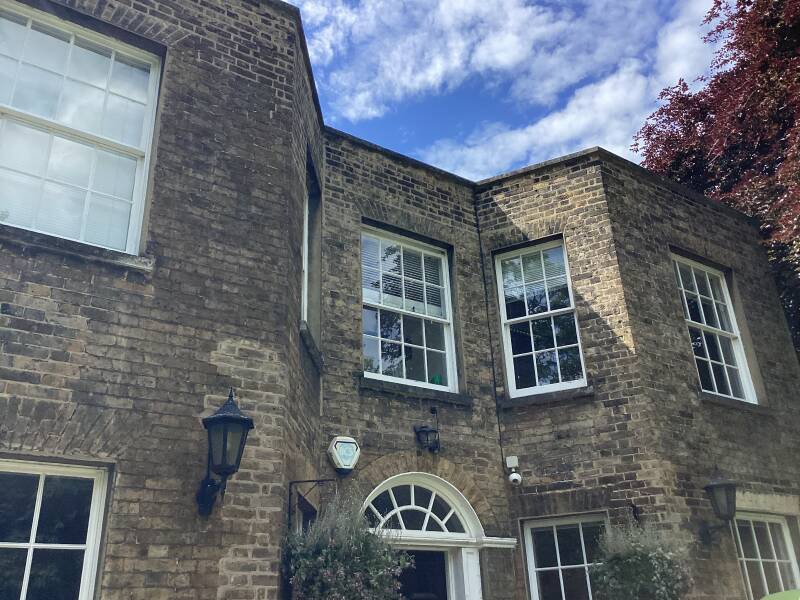
Currently, the Metropolitan Police Service is responsible for policing the park and are based inside what is colloquially known as 'the Old Police House', which is situated within the park.[57] The building was designed by John Dixon Butler, who was the forces's surveyor between 1895 and 1920. For the police, he completed around 200 buildings, including the Former New Scotland Yard, Norman Shaw South Building (assisting Richard Norman Shaw)

The ROYAL PARKS CONSTABULARY was created in 1872 as the Royal Parks Keepers; keepers were given full police powers within the parks. They were renamed the RPCin 1974. Before 1872, Hyde Park had its own constables who lived in some of the entrance lodges and worked out of the rooms inside Marble Arch. One of the last Inspectors of those constables was Samuel Parkes, who won the Victoria Cross in the Charge of the Light Brigade in 1854
New lodge
A large Victorian villa with at least three storeys, built in 1876, now a private residence, stands a few yards north of the police station. This lodge as well as others in the park, like Serpentine Lodge, can be leased from the Royal Parks as dwellings by private individuals and their families.
Unbelievable but true: bobbies on rollerblades

In 2000, a four-strong team of roller skating officers were introduced to the Royal Parks Constabulary in London's Kensington GardensDespite promises that they would revolutionise the policing of London's parks, the pilot scheme was abandoned only a few months later. There was said to be a fatal flaw in the idea of a skating pursuit. Perpetrators would simply run across the grass, where the skate police could not follow.
Hudson memorial bird sanctuary
The Hudson Memorial Bird Sanctuary is a carved stone memorial commemorating the 19th century writer and naturalist, William Hudson. He helped to establish the Royal Society for the Protection of Birds and campaigned for wild areas in parks, at a time when they were always neat and tidy.
The carving, by Sir Jacob Epstein, represents Rima, the child goddess of nature who featured in Hudson's novel Green Mansions, published in 1904. The engravings are by the designer Eric Gill. The memorial was installed in 1924 and was immediately controversial. The Daily Mail wrote: "take this horror out of our park".
Controversial
Sir jacob Epstein
This modern art sculpture caused a great controversy regarding its nudity. A letter demanding the removal of the memorial with as little delay as possible appeared in the Morning Post, in Nnovember 1924, signed by a number of noted persons. This manifesto declared that Epstein's design was "by universal consent so inappropriate and even repellent that the most fitting course open to the authorities would be to have it removed bodily. It would be a reproach to all concerned if future generations were allowed to imagine that this piece of artistic anarchy in any way reflected the true spirit of the age."
When cultural historian Fiona MacCarthy began working on a biography of ERIC GILL during the Thatcher years, few could have anticipated that the resulting 1989 book would continue to have repercussions decades after its publication. Using Gill’s own personal diaries and writings, MacArthur was able to evidence for the first time the artist’s extensive history of abuse. Gill SEXUALLY ABUSED his two eldest daughters and had INCESTUOUS sexual relationships with two of his sisters. ‘His sexual obsessiveness he rationalised into seeing sex as an aspect of God’s glory’, wrote MacArthur, of a man who conducted scores of EXTRAMARITAL AFFAIRS and molested the family DOG.
Eric Gill

sheep trough


Bordering the north of kensington gardens & hyde park: bayswater road

In the 1700s, King George Il (1683-1760) lived nearby at Kensington Palace with his German wife, Queen Caroline (1683-1737), who had a keen interest in horticulture, and hired pioneering landscape gardener Charles Bridgeman 1690-1738) to create a design for the Palace grounds.
His bold plan took 100 acres from nearby Hyde Park, turning Kensington Gardens into the familiar landscape we know today. Working under the Queen's direction, Bridgeman introduced the Round Pond that sits in front of the Palace, as well as the natural-looking lake known as the Long Water in Kensington Gardens and the Serpentine in Hyde Park.
Buck hill bastion. Kensington gardens re-discovered ha-ha
To separate these new Palace gardens from Hyde Park, Bridgeman ingeniously used a ditch with a sunken brick wall around 2 metres deep. Unlike a fence, this created a boundary without interrupting the view. This type of ditch became known as a 'ha-ha', possibly because people were surprised when they came across it. Bridgeman's clever design was copied all over the country.
Along the top of the ha-ha, Bridgeman created three round ornamental 'bastions, types of projecting fortifications. One of these, known as 'Buck Hill Bastion', stood in the space in front of you. If you look slightly to your right, you will see a depression in the ground. This circular ditch marks the footprint of the old northern bastion.
A murder?
During the WW1 period, there was a tragic murder here. On the evening of 19 February 1915, a policeman found the body of local woman Alice Elizabeth Jarman lying in Bridgeman's ha-ha ditch. Despite an extensive investigation, no culprit was ever found.
The ditch was soon covered over, in order to deter further tragedies. It remained this way until 1995 when it was re-excavated, revealing the outline of the bastion you can still see here today.
Camouflaging and Trench digging, a war time training
During the First World War 1914-1918), soldiers used this part of Kensington Gardens to practise digging trenches.
Nearby, a ground-breaking Camouflage School was also set up. Here, methods of camouflage were tested and shared with hundreds of soldiers.
Woodland management in the royal parks
Woodlands are a valuable habitat, allowing us to enjoy nature whilst providing ecosystem services such as storing carbon, filtering pollution and reducing flooding. They are one of the most important habitats for invertebrates, which use all parts of a woodland, including the leaves, flowers, living wood, deadwood, leaf litter and soils.
The Royal Parks manage woodlands to benefit biodiversity.
This woodland is managed by coppicing, an ancient craft used since 4,500 BC which involves cutting shrubs ánd trees close to the ground, encouraging the growth of new shoots. Coppicing provides timber for a variety of uses including fencing, furniture, fuel and to make charcoal.
Woodlands are comprised of different habitat layers: the canopy, understory and ground layer.
Tall trees (or 'standards) such as English oak or wych elm form the woodland canopy. These support a wide range of species. Little owls nest in tree hollows, whilst purple hairstreak butterflies feed on aphid 'honeydew' high in the canopy.
Cyclical coppicing of shrubs and trees like hawthorn and hazel creates a dense and diverse woodland structure, and helps sunlight reach the woodland floor. Hawthorn alone supports around 300 insect species and provides food and shelter for other wildlife. We use the cut stems to create dead-hedges, providing habitat for invertebrates, birds, small mammals and amphibians.
Coppicing also creates sunny, warm glades where ferns, grasses and flowering plants grow, attracting pollinating insects such as butterflies, bees and beetles.
Leaf litter and fallen wood on the woodland floor support detritivore and decomposer invertebrates and fungi who recycle nutrients back into the soil, helping plants and trees grow.
Buck hill lodge

The house with, arguably, the biggest front garden in London… This almost-fairytale-like Victorian detached cottage was built in 1858. It is one of the sneaky houses hidden in Hyde Park, rented out by Royal Parks and can be found near Lancaster Gate in Kensington Gardens.
.
pet dogs cemetery


London's Hyde Park was the site of an informal pet cemetery between 1881 and 1903, in the gatekeeper's garden, part of VICTORIA LODGE. From the first burial of "Cherry" until its official closure in 1903, it received 300 burials with miniature headstones,[with a final special burial of the Royal Marines mascot dog "Prince" in 1967.


Alongside BAYSWATER ROAD, buses taking you here or to Central London. Try 94 to TURNHAM GREEN, or 274 to PRIMROSE HILL

And, at the eastern end of bayswater road, Around Edgware road
EDGWARE ROAD & around
A multicultural district known to Londoners as Little Cairo, Little Beirut or Little Arabia

Tyburn Convent
In 1585 Gregory Gunne predicted that one day a religious house would be founded at Tyburn. His prediction was fulfilled when Tyburn Convent was established in 1903.
The Narrowest house

Tyburn tree
Which one?

Free speech: speakers’ corner

Marble arch

A protected banksy work!

LBTC takes you here on the LOVE LONDON TOUR!

The reformers tree

THE PARADE GROUND
Royal salutes

The four winds’ fountain
Unveiled on 25 June 1963, the Joy of Life fountain by T B Huxley-Jones features two bronze figures dancing above a pond, while four chubby bronze children emerging from the water at the edges.
Animals in war
Powerful and moving tribute to all the animals that served, suffered and died alongside the British, Commonwealth and Allied forces in the wars and conflicts of the 20th century.

7th july 2005 TERRORIST ATTACKS MEMORIAL

BRITISH SUMMER TIME or CHRISTMAS WONDERLAND?

After the serpentine south gallery…back tO LBTC TOUR
SERENITY Artwork
Unveiled 7 September 2009, and originally titled ISIS, and renamed in 2015. 1,000 plaques around the base were sold to donors for personalised inscriptions at £1,000 each, as a way of funding the park's ISIS EDUCATION CENTRE for introducing young people to the study of nature.
The sculpture is inspired by the Egyptian goddess of nature. It was designed by British sculptor Simon Gudgeon. It was donated by Simon Gudgeon and Halcyon Gallery to help raise that money.

PRINCESS DIANA’S MEMORIAL FOUNTAIN

The fountain is located in the southwest corner of Hyde Park, just south of the Serpentine lake and east of the Serpentine Gallery. Its cornerstone was laid in September 2003 and it was officially opened on 6 July 2004 by Queen Elizabeth II. Also present were Diana's younger brother Charles Spencer, Prince Charles (niw Charles III), her sons Prince William and Prince Harry, Prince Philip and her two sisters Lady Jane Fellowes and Lady Sarah McCorquodale. The opening ceremony brought the WINDSORS and the SPENCERS together for the first time in seven years.
Work on the project began in 2001.The fountain was designed by Gustafson Porter & Bowman,and cost £3.6 million. Kathryn Gustafson, an American landscape artist, said that she had wanted the fountain to be accessible and to reflect Diana's "inclusive" personality and to express Diana's spirit and love of children. Gustafson said: "Above all I hope that it provides a fitting memorial for the princess and does credit to the amazing person that she was."
The 545 individual pieces of Cornish granite were cut using sophisticated computer-guided cutting machines by S. McConnell & Sons, in Kilkeel, Northern Ireland,then transferred to England by sea.
BY the same practice… WOOLWICH SQUARES
WOOLWICH?: Visit SOUTH EAST LONDON’s former villages, towns and suburbs
THE SERPENTINE
This 32-acre (13-hectare) lake was created from the old River Westbourne and a chain of small ponds, probably by the architect and landscape gardener, WILLIAM KENT for Queen CAROLINE, wife of George II.
It was extended to form the LONG WATER of what is now part of Kensington Gardens, making some 40 acres (16 hectares) of water in all. The spoil dug out was used to build up the banks of THE DELL and FISHERMAN'S KEEP ,where people may still fish with a licence from the Park authorities.
The depth of The Serpentine is variable but plumbs to 20 feet (6 metres) deep in places. It was opened on May Day 1731, with GEORGE Il and his family in two yachts, perhaps accompanied by a pair of tortoises sent by the Doge of Genoa to mark the event.
The lake was the site of another great gala in 1814, a reenactment of the Battle of Trafalgar of 1805. It was, however, rather a SMELLY lake for the first part of its life, partly because SEWAGE was carried into it by the River Westbourne. And murky image was emphasised when it was sometimes chosen as a venue for suicides. Harriet WESTBROOK, the deserted and pregnant first wife of the poet, PERCY BYSSHEY SHELLEY, drowned herself in it in December 1816.
Today, the lake is much cleaner and usually full of high-prowed boats painted an attractive, dusky aquamarine blue. They are hired from the Boathouse you can see on the opposite side
The HYDE PARK LANSBURY LIDO.
LIDO as in Venice Lido?. Nah, very different!

The golden age of lidos in the United Kingdom was in the 1930s, when outdoor swimming became popular, and 169 were built across the UK as recreational facilities by local councils.Many lidos closed when foreign holidays became less expensive, but those that remain have a dedicated following. THE name LIDO originated, of course from the Lido di Venezia.
The first open air swimming pool that was officially called a “LIDO”was "THE EDMONTON LIDO" in Houndsfield Road, EDMONTON following reopening after refurbishment on 27 July 1935. The newly built "TOTTENHAM LIDO", opened on 5 June 1937, and the "WEST HAM MUNICIPAL", opened on 30 August 1937 also in London, were officially called lidos from the outset. Elsewhere, the Woodford Times reported on 13 May 1932 on the new "Lido" being constructed at WHIPPS CROSS. The Kentish Times on 9 June 1933 similarly carried the headline: "Lagoon 'Lido' Opened on Bank Holiday". Neither of these two pools was officially called a "lido" at that time, however.
London Lost lidos
Some morehistory of LIDOS


The Lido Pavilion was built in 1930 to provide mixed bathing and sunbathing facilities. As the First Commissioner of Works, in the Depression, GEORGE LANSBURY was keen to improve recreational facilities and appealed for funds. Mr D'ARCY COOPER responded with £5,000 and the Pavilion was built in memory of his son.
More about its founder GEORGE LANSBURY
Born Feb. 21, 1859, near Halesworth, Suffolk. Died May 7, 1940, London. He was a leader of the British Labour Party (1931–35), a Socialist and poor-law reformer who was forced to resign the party leadership because of his extreme pacifism.
A railway worker at the age of 14 and later a timber merchant, he became a propagandist for Henry Mayers Hyndman’s Social Democratic Federation in 1892 but eventually repudiated its strict Marxism. He helped to found (1912) and for a time edited, the Daily Herald, the first British newspaper devoted to labour subjects. In World War I he defended the rights of conscientious objectors.
A Labour member of the House of Commons (1910–12, 1922–40), he served as first commissioner of works in the Labour government of 1929–31 and then became leader of the parliamentary opposition. Unwilling to join his associates in calling for economic sanctions that might have led to war against Italy for its aggression in Ethiopia, Lansbury resigned in 1935 and was succeeded as party leader by his deputy, Clement Attlee (prime minister, 1945–51). In 1937 Lansbury visited Adolf Hitler and Benito Mussolini in the belief that his personal influence could stop the movement toward war.
The Poplar Rates Rebellion was a tax protest in Poplar, East London. In the early 20th century Poplar was an incredibly poor area and the council rates at the time were based on a ‘rateable value’ deriving from rents. Because Poplar was such a poor borough, property rents and rate incomes were very low.
In 1921, faced with the prospect of a further increase in the rates, the 1919 elected Poplar Labour Councillors decided to not collect the precepts which it should have passed on to four cross-London authorities. In response, the authorities took Poplar Councillors to the High Court.
The Lansburys, as a family, were great supporters of female suffrage anctivists and worked closely with Sylvia Pankhurst. Visit BOW and ROMAN ROAD MARKET!

His son, Edgar, who had married first Minnie, after her death, with his second wife fathered the actor ANGELA Lansbury (1925 -2022).
Son of Daisy Lansbury making him the cousin of actress Angela Lansbury
Richard Oliver Postgate (12 April 1925 – 8 December 2008) was an English animator, puppeteer, and writer.[1] He was the creator and writer of some of Britain's most popular children's television programmes. Bagpuss, Pingwings, Noggin the Nog, Ivor the Engine, Clangers and Pogles' Wood, were all made by Smallfilms, the company he set up with collaborator, artist and puppet maker Peter Firmin.

Now, you will joining LA ROUTE DE ROI, that is the king’s road…. (all right, now, pronounce those french words “ROTTEN ROW”)

What is rotten here? .. , Where is the row (of houses)?… Nothing and nowhere. WILLIAM III and MARY II travelled along the original bridlepath from the COURT, in ST.JAMES’S PALACE, to their home in KENSINGTON. The monarchs had 300 lamps hung from the trees to try to combat the increasing number of highwaymen active in the current public park, thus making ROTTEN ROW the first road in the country to be lit at night. The measure was only partly successful: GII himself was latter mugged here!.
Current BRIDLeway

To the right of ROTTEN ROw…
site of the crystal palace: the 1851 great exhibition epicentre
The site of the Great Exhibition is now a grassed open area, lined by trees. The aerial view shows part of Hyde Park. Part of The Serpentine is at the top right. Part of the road through the park is on the far left and meets up with Exhibition Road (E). Knightsbridge runs along the bottom of the view. The tall building, casting a long shadow is the Knightsbridge Barracks (K).

By the way, WHY NOT VISITING CRYSTAL PALACE, SOUTH LONDON?
And you will discover what is left of the GE1851 CRYSTAL PALACE?

Sydenham, That is, crystal paLACE.
Bus route no.3 takes you there


Enjoy a visit to SOUTH-LONDON!. CLAPHAM, BRIXTON and DULWICH with LBTC



Remember, you are in HYDE PARK….alongside the lbtc cycling route
HYDE PARK BARRACKS. HQ of the HOUSEHOLD CAVALRY

You are leaving behind, to your right, KNIGHTSBRIDGE (the district). Here you gave some ideas, in case you wish to explore it…

Bridges?… Knights ?… Battles?… It is all, in fact, more mundane: "bridge of the young men or retainers," from the Old English cniht (genitive case plural –a) and brycg. Cniht, in pre-Norman days, did not have the later meaning of a warrior on horseback, but simply meant a youth.
Beauchamp place
Former san lorenzo restaurant
Princess Diana had several favorite restaurants, including
Da Mario in South Kensington, an Italian restaurant where she dined with her sons, and San Lorenzo in Knightsbridge, a now-closed Italian restaurant where she became close friends with the owners. She also frequented Launceston Place in Kensington and Le Caprice.
Harrods: More Diana’s connections
At one time, there were two memorials for Princess Diana and Dodi Fayed at Harrods, commissioned by former owner Mohamed Al-Fayed. However, both were removed in 2018. The memorials were returned to the Al-Fayed family, and a new public statue of Diana was later installed at Kensington Palacen.
in 1998, the first memorial was unvel a pyramid-shaped display containing photos of Diana and Dodi. It also featured a wine glass smudged with lipstick from Diana's final dinner and an engagement ring that Dodi Fayed reportedly purchased for her.
In 2005, a 3-meter bronze statue called Innocent Victims was unveiled. Designed by Bill Mitchell, it depicted Diana and Dodi dancing on a beach with a dove. The statue was located at the foot of the Egyptian escalator.
She was a regular at the luxury department store, known to shop for a variety of items, including her blue engagement outfit and nursery items before Prince Harry's birth To afford her some privacy, the store would sometimes allow her to shop before it was open to the public. Besides clothing and nursery items, she would buy gifts for friends and was also seen with Sarah Ferguson on occasion at the store.
Dutch inspired terrace houses and shps
Harvey nichols
It was one of her favourite high-end department stores, along with Harrods.
She was a big fan of the fifth-floor restaurant and bar, and would often stock up on beauty products from brands like Clinique and Dior at its counters.
Her visits were often managed discreetly; some reports mention that large department stores like Harvey Nichols would even be closed for her private browsing to allow her to shop in peace without being mobbed by the public or paparazzi. Photos exist of her shopping there as well, such as one from October 15, 1994.
More about Diana’s shopping trips: https://www.scottishdailyexpress.co.uk/tv/princess-dianas-dreadful-shopping-trip-25992852
To your left, EXPLORE MORE OF HYDE PARK
The dell restaurant

Marvellously placed with a view up the Serpentine. There are outside tables beside the water for warm days in summer or winter. Walk south across the bridgelike para-pet, from where you can look down into The Dell and admire more trees, among them a paper-bark maple (Acer griseum).
Cascades

The dell
Attractive hollow, with a cascade and a pool, fed with spillage from the SERPENTINE lake, which here lies unseen , banked-up behind the bridge-like parapet

The planting, set in smooth grass, is mainly for foliage effect with, for example, spiky yucca, tall reeds, cypress and other evergreens, and a magnolia. Behind you, at the exit of the stream, is a swamp cypress (Taxodium distichum, see page 18), with a stand of gunnera, looking like a giant rhubarb nearby. Other interesting species include a strawberry tree (Arbutus unedo) up the bank and a Caucasian elm (Zelkova carpinifolia), with toothed leaves and peeling bark. This is a rich corner, worth a visit in winter when the different shapes of the bare trees create picturesque patterns. In early spring the grass is alight with snowdrops and other bulbs, and the magnolia is in magnificent flower.
Holocaust memorial



The couple of colossal lumps of Cornish granite halfway up the hollow are not prehistoric but are the remains of an 1861 drinking fountain. At the top of the slope to your right is a memorial recording the fact that spring water was once tapped at this spot to serve the monks of Westminster Abbey.

the flower gardens
HUNTRESS FOUNTAIN


BOY AND DOLPHIN statue


The Victorians held display competitions in this area, and it is policy under Jennifer Adams, Superintendent of the central Royal Parks, to reproduce some of their early bedding schemes. An explanatory notice is normally pinned on a board nearby. The path through the beds takes you past two interesting fountains. The first one you come to is a boy with a dolphin, the water jetting unexpectedly not from its mouth but from its nose. It is by a Victorian sculptor, and was erected in 1862 on a site on Park Lane, moved to The Regent's Park, and then to this spot. The second, to your left, has Diana drawing her bow over a bowl supported by four caryatids; this was executed in 1906 by Countess Feodora Gleichen.
ROSE GARDEN

A necklace of small rose garrdens, a type of planting very much in tune with current fashion. Follow the path leftward to walk through an impressive new feature, a long, sinuous, metal-framed pergola, planted with a white rambler, 'Gloire de Dijon' and other roses (all name-tagged), and large-flowered hybrid clematis. Teresa Short, the supervisor in charge of the rose garden, is creating a new look for the area, with a sense of enclosure, and is planting it with spring and herbaceous bedding and border plants to give all-year interest. Take a few minutes to wander among the rose beds - the species and varieties are all named. There is more general planting among the roses, with the silvery cotton lavender often prominent.

You are still following rotten row:
To your right, the FRENCH EMBASSY And, opposite, that of kuwait.
Nickname: London’s GIBRALTAR’s strait





Pam!: MAN HOLES all over London: made in France, in PONT-À-MOuSSON

From here you can branch out from the regular route, for A Possible alternative route through BELGRAVIA, pimlico and westminster, on your way back to lambeth
Through albert gate, between the two embassies, crossing knightsbridge, and then alongside lowndes square











Back to the lbtc original route, To your right
The southeast corner of Hyde Park has been a hotbed of horticulture for a century and a half. The Victorians delighted in the botanical discoveries being made at the ends of their empire, and enthusiastically grew many of the plants newly introduced by botanists, many of them delicate species native to hotter climates, in greenhouses for bedding out in the warmer months.
A round concrete structure (an air shaft serving Hyde Park Corner Underground Station) in the grassy bank on the right. Planted on the bank beside it is an example of traditional carpet bedding in which,the plants form the words 'The Royal Parks'.
Carpet bedding uses foliage plants that can be close-clipped to create intricate designs. The plants, tightly positioned with formers (wooden frames) while in the greenhouse, might include fleshy-leaved South African crassulas, and Mexican echeverias. The displays are usually sponsored, and in 1966 the motif of an association for disabled people was featured. In winter these beds are usually planted with wallflowers for spring display.
DECIMUS BURTON’S SCREEN AND LODGE




APSLEY HOUSE: “NUMBER ONE, LONDON”, the home of the (first)duke of wellingtoN
the former home of Arthur Wellesley, 1st Duke of Wellington, victor of Waterloo. Designed and built by Robert Adam in the 1770s, the house was bought by the duke in 1817. He transformed it into a palatial residence to befit his status, and filled it with works of art and gifts from grateful rulers across Europe. The public rooms now form a dazzling backdrop to Wellington’s outstanding collection.

Arms of the Duke
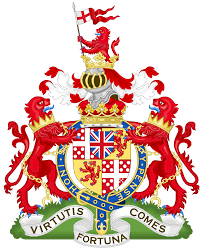
And his flag







QUEEN ELIZABETH THE QUEEN MOTHER GATE
Erected in 1993, shortly after her 93rd anniversary.. the cast-iron screen is composed of 2 set of gates, designed by GIUSEPPE LUND, flanking a central panel, containing the LION and the UNICORN, sculpted by DAVID WYNNE.





ACHILLES Statue (the DUKE’S parts are hidden behind a huge leaf, a complimentary complement from Victorian ladies)

By RICH.WESTMACOTT, 1877, and cast from captured cannon. It was modelled on an antique horse tamer statue, on the QUIRINAL HILL, in Rome. The head of the statue was modelled on the duke’s. As it embarrassed the women who contributed to its erection, as a present to WELLINGTON, for its nakedness and enormous size of the penis (not necessarily modelled on the Duke’s), WILLIAM WILBERFORCE led a campaign to have the statue removed for decency’s sake… a fig leaf was eventually placed in the appropriate place, as a compromise.

Visit CLAPHAM COMMON, with London Bicycle

DISCOVER MORE!: Along the BROAD WALK, NORTHWARDS
Hyde park. AN old lonDon aerodrome?
Is it true that trees were felled here, 25 yards, both sides of the paths, in 1954, in order to create an emergency airstrip, for the royal family to be able to flee?.

London lore!: A similar story is said about the KENSINGTON GARDENS B-ROAD WALK
Horse head

Byron meditating on a rock

nearby, DISCOVER mayfair…

But, Why not TAKING SOME TIME AND EXPLORING AND discovering a bit oF…
Belgravia
On the map, THE GRENADIER PH
. Monumental, again!. George Peabody lived here
CHESTER SQUARE. Residents: Thatcher, Lloyd-Webber, Abramovitch…
EBURY STREET, ELIZABETH S. Eateries
LOWER BELGRAVE ST. Eateries.
WILTON PLACE
KINNERTON STREET
THE GRENADIER PH
8HALKIN STREET, WEST HALKIN STREET & MOTCOMBE ST.
BELGRAVE SQUARE
THE STAR TAVERN
EATON SQUARE

YOU ARE NOW IN HYDE PARK CORNER, just about to cross over DUKE OF WELLINGTON PLACE


I hope that you are enjoying this travel guide!

























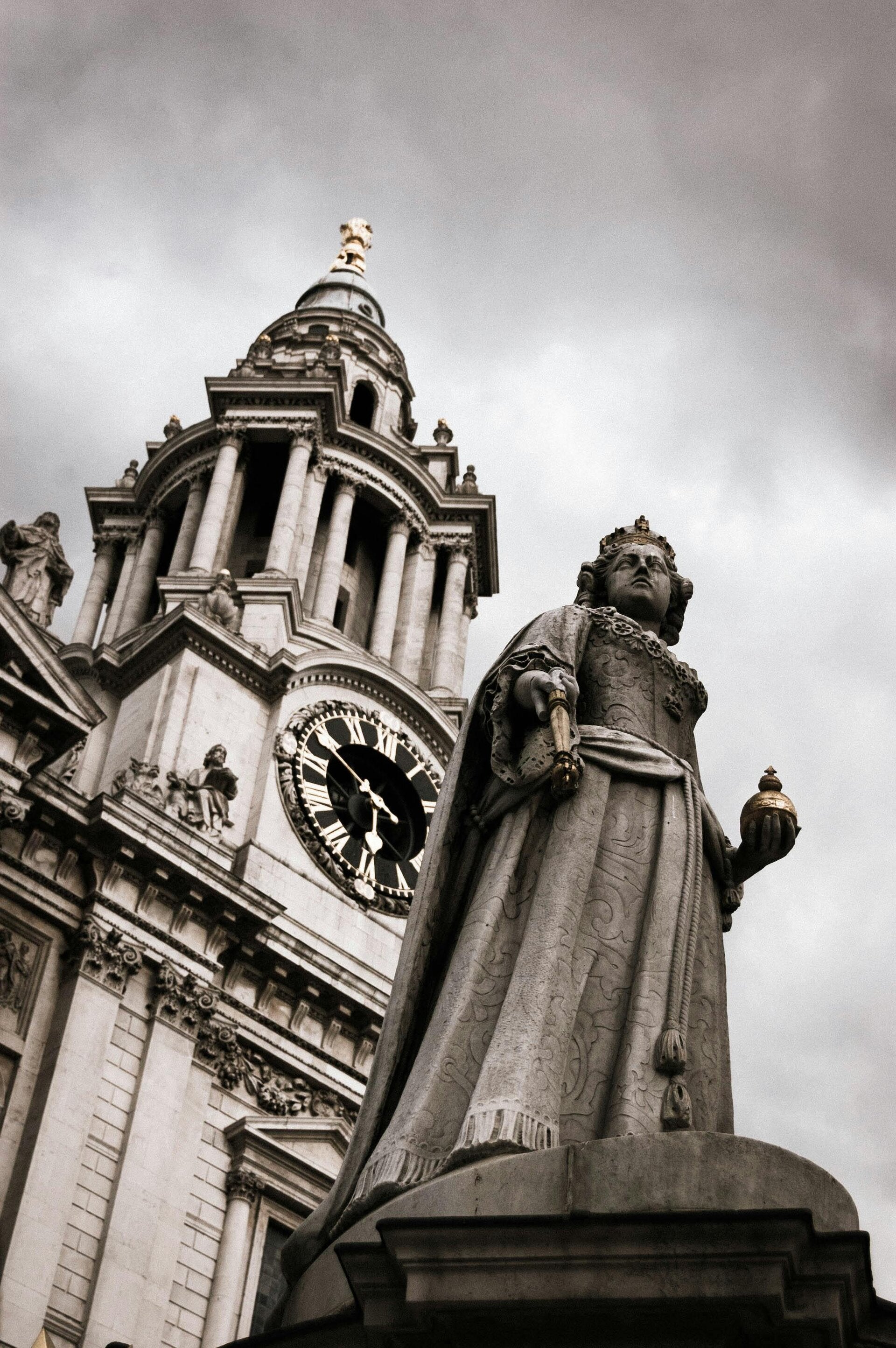







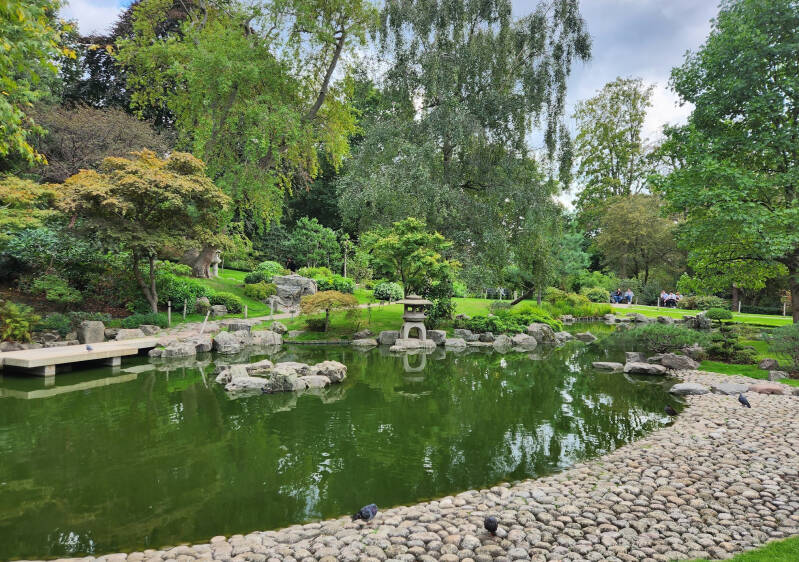







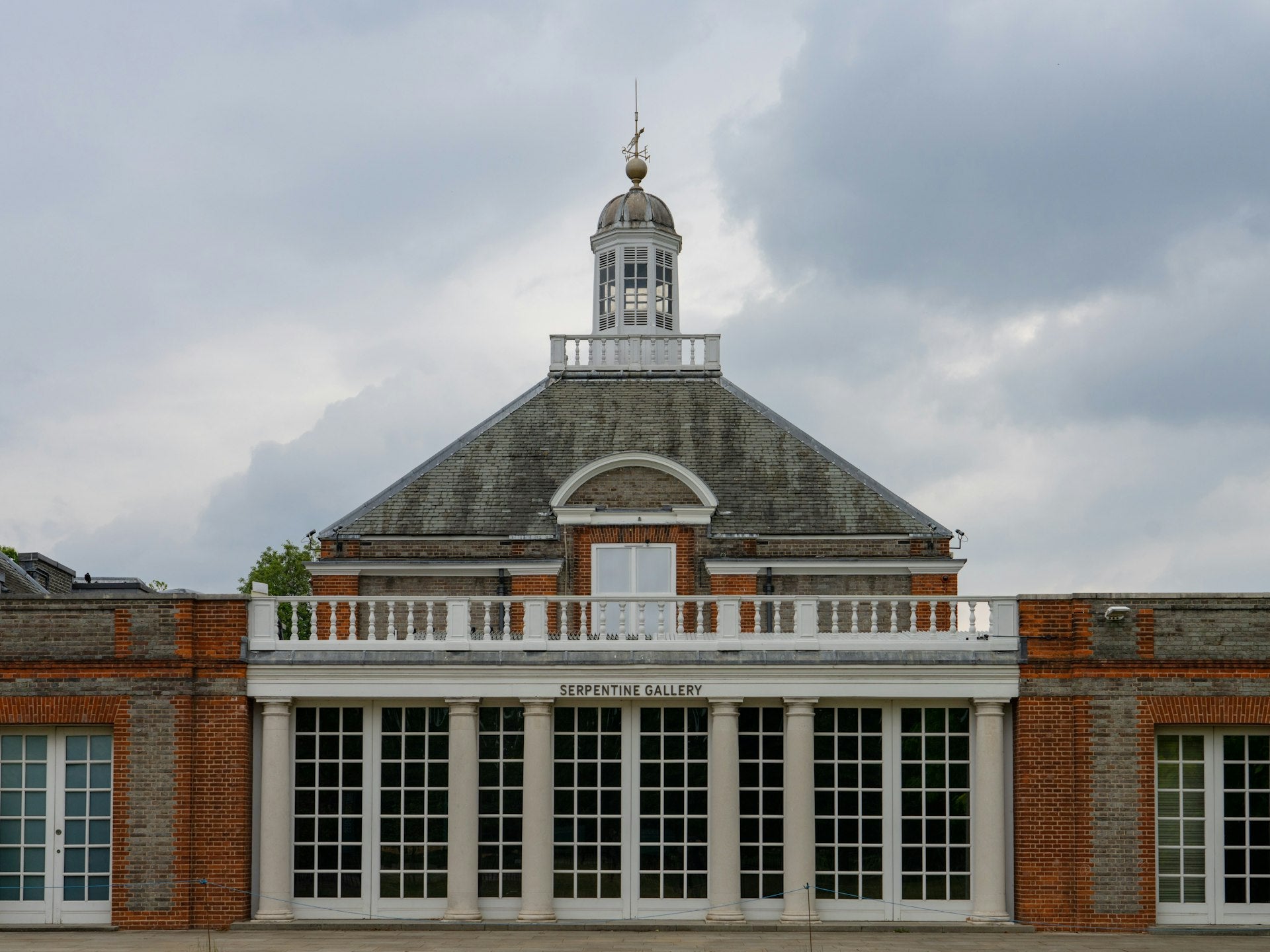

















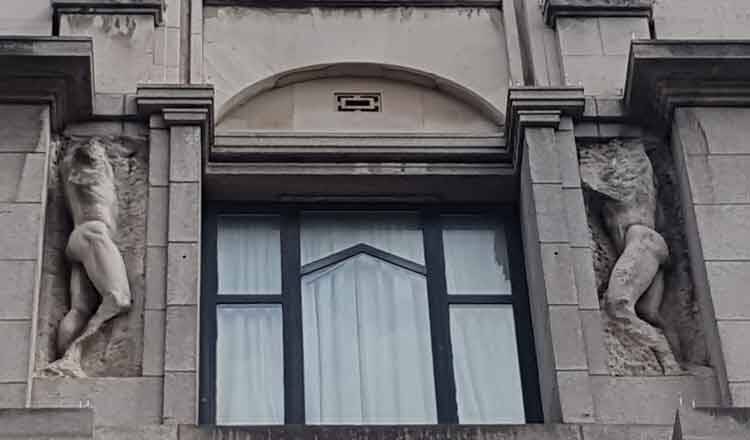























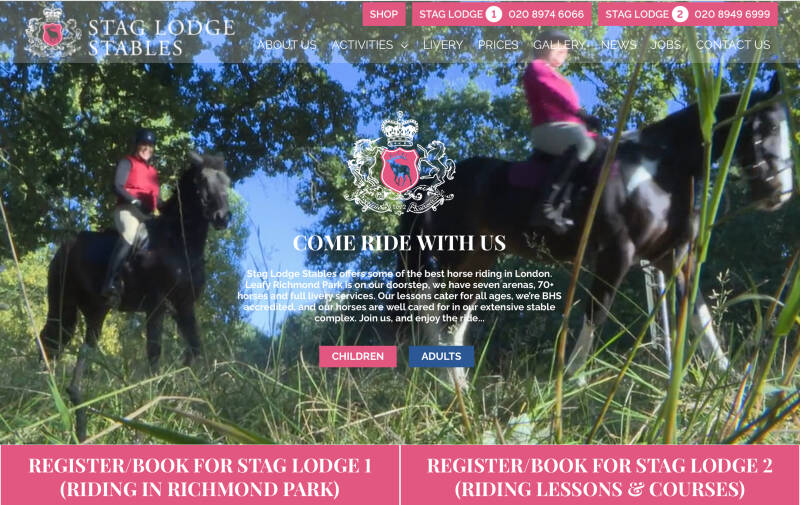

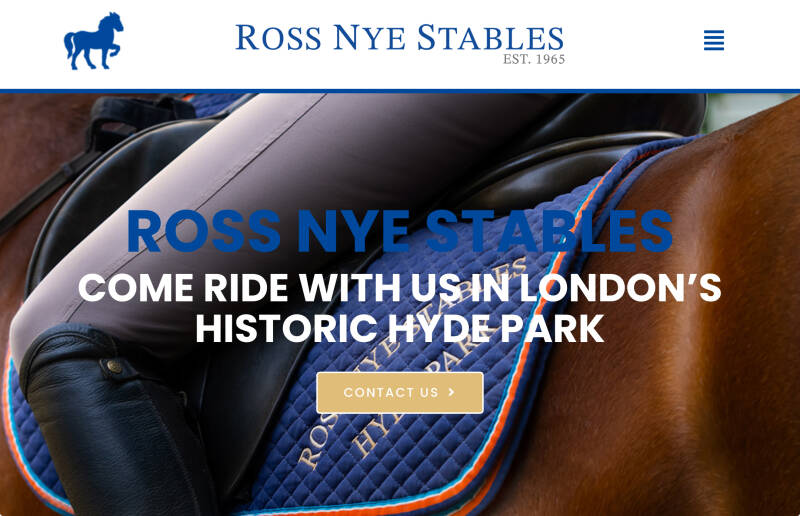

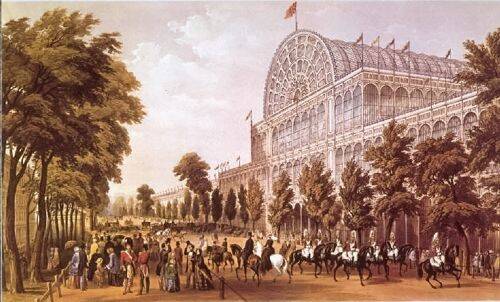




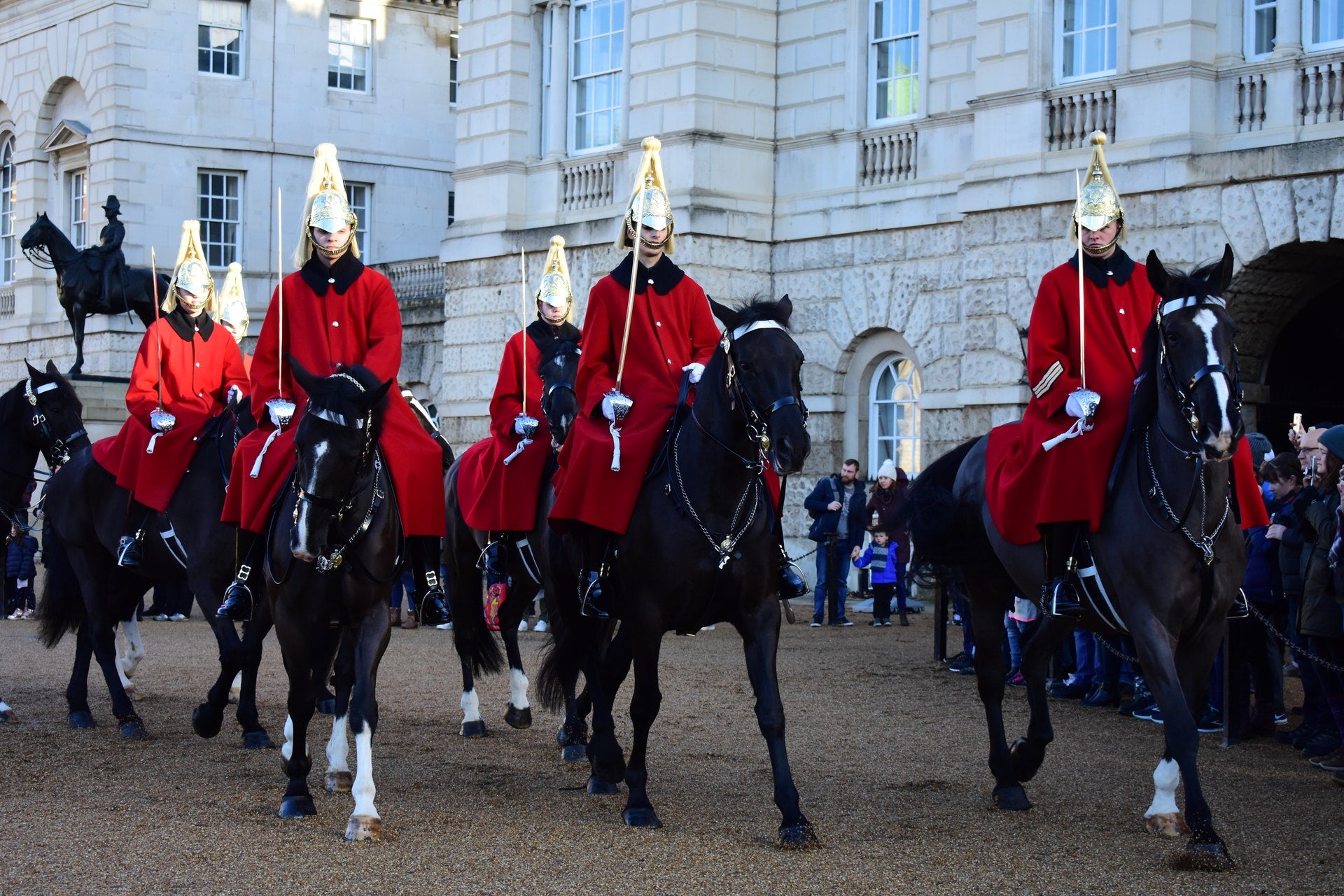
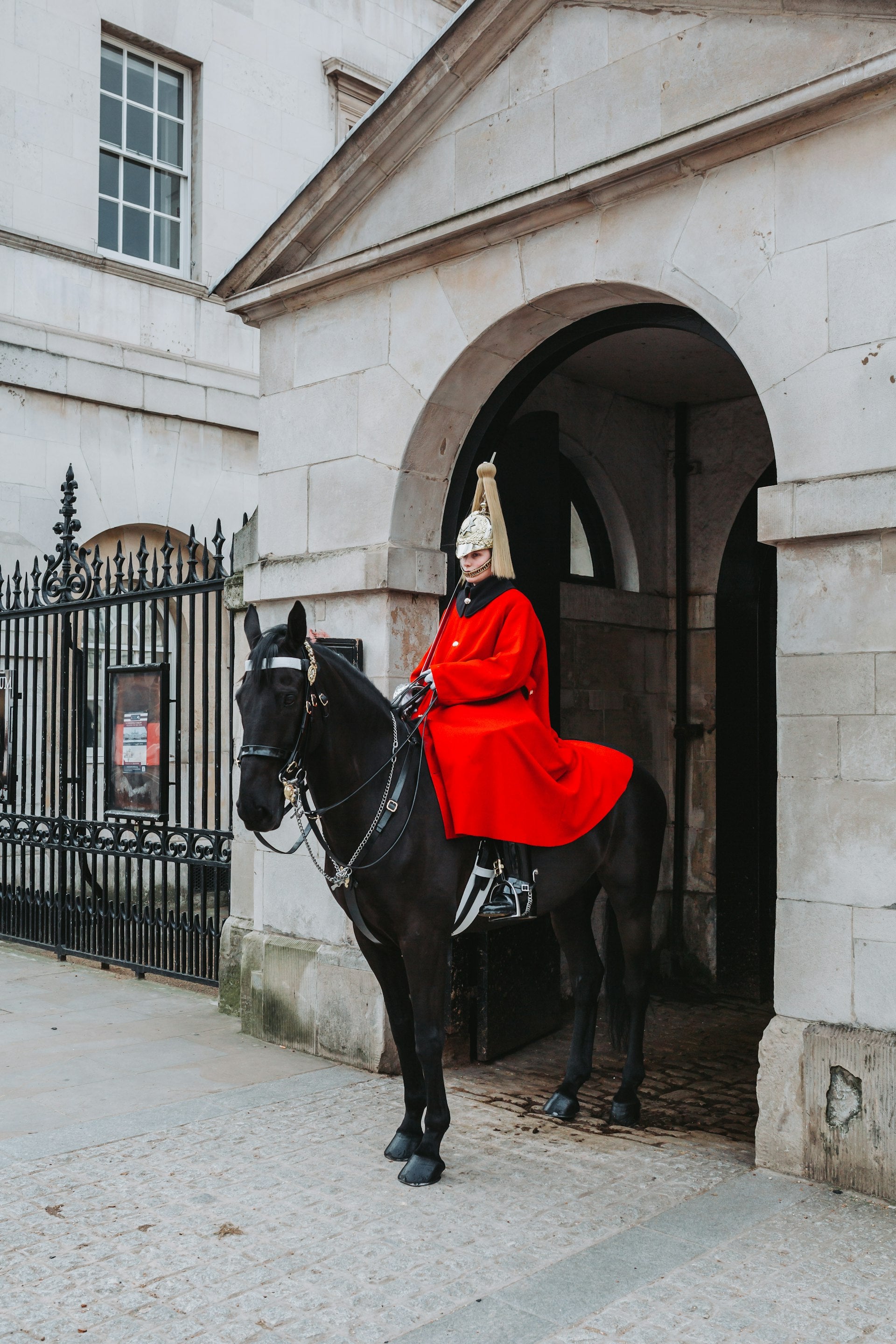




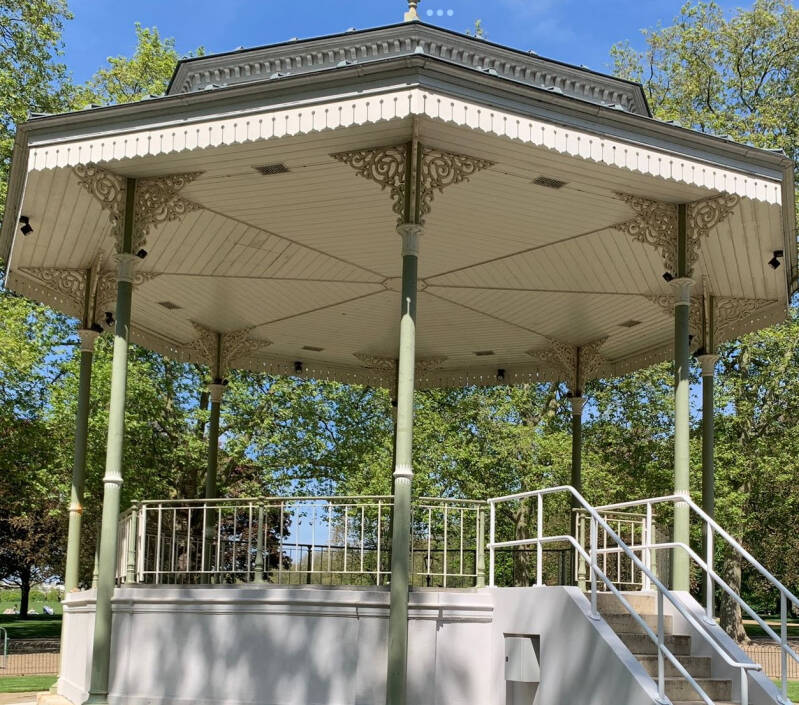











Create Your Own Website With Webador